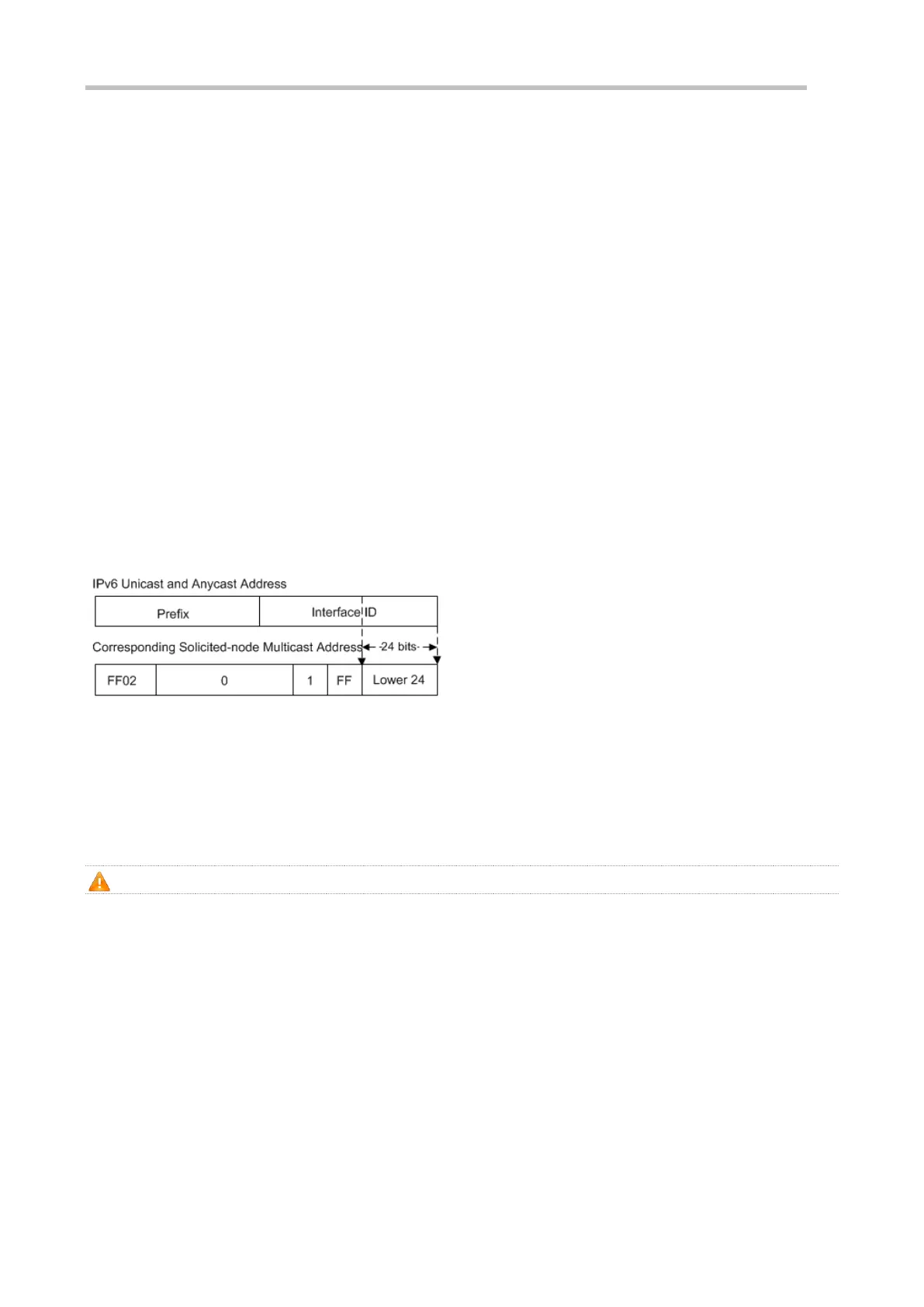Configuration Guide Configuring IPv6
Group ID field
The group ID consists of 112 bits to identify a multicast group. A multicast ID can represent different groups based on the
flag and scope fields.
IPv6 multicast addresses are prefixed with FF00::/8. One IPv6 multicast address usually identifies interfaces on a series
of different nodes. After a packet is sent to a multicast address, the packet is then forwarded to the interfaces on each
node identified by this multicast address. For a node (host or device), you must add the following multicast addresses:
3. Multicast address for all nodes on the local link, that is, FF02::1
4. Solicited-node multicast address, prefixed with FF02:0:0:0:0:1:FF00:0000/104
If the node is a device, it also has to be added to the multicast address of all devices on the local link, that is, FF02::2.
The solicited-node multicast address corresponds to the IPv6 unicast and anycast address. You must add a
corresponding solicited-node multicast address for each configured unicast and anycast address of an IPv6 node. The
solicited-node multicast address is prefixed with FF02:0:0:0:0:1:FF00:0000/104. The remaining 24 bits are composed of
the least significant 24 bits of the unicast or anycast address. For example, if the unicast address is
FE80::2AA:FF:FE21:1234, the solicited-node multicast address is FF02::1:FF21:1234.
The solicited-node multicast address is usually used in NS packets. Its address format is as follows:
Figure 3-7
Anycast Addresses
Similar to a multicast address, an anycast address can also be shared by multiple nodes. The difference is that only one
node in the anycast address receives data packets while all nodes included in the multicast address receive data packets.
Since anycast addresses are allocated to the normal IPv6 unicast address space, they have the same formats with
unicast addresses. Every member in an anycast address must be configured explicitly for easier recognition.
Anycast addresses can be allocated only to devices and cannot be used as source addresses of packets.
RFC 2373 redefines an anycast address called subnet-router anycast address. Figure 3-8 shows the format of a
subnet-router anycast address. Such an address consists of the subnet prefix and a series of 0s (interface ID).
The subnet prefix identifies a specified link (subnet). Packets destined to the subnet-router anycast address will be
forwarded to a device on this subnet. A subnet-router anycast address is usually used by the application on a node to
communicate with a device on a remote subnet.
Figure 3-8
